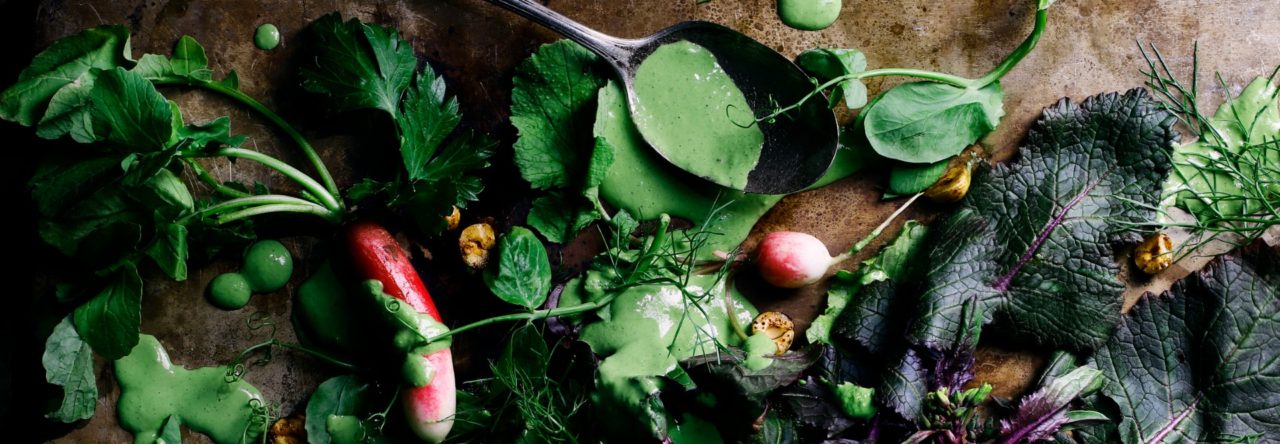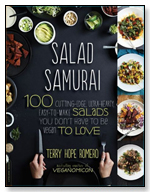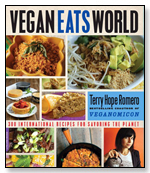-heavy, sharp chef’s knife or Santoko Japanese-style knife
-heavy duty cutting board: wood, bamboo or heavy plastic OK
–big cast iron skillet, large soup stock pot, smaller saucepans and a small skillet helps
-mixing bowls, measuring cups & spoons. Pyrex liquid measure cups are perfect for measuring both hot and cold liquids.
-wire whisk, heat resistant silicon spatulas, long handled metal tongs
-baking pans, including rectangular ceramic or glass pans for roasting tofu, baking sheets
-parchment paper for fast, easy clean up with baking/roasting on pans and sheets
A few recipes will require blending and high speed chopping/pureeing. A moderately priced food processor is totally worth your while. If you can’t swing that consider investing in a hand held immersion blender, usually a little cheaper but a wizard at making creamy sauces, dips, soups, etc. And of course, the classic countertop blender does the job too.
If you have a wok, that’s pretty awesome but optional if you have a deep 12 inch skillet with a cover, either stainless steel or cast iron. If you’re considering purchasing a wok, avoid non-stick woks in favor of carbon steel flat bottom woks. You’ll need to season carbon steel (not unlike seasoning cast iron), but I’ll tell you how; and once you do it you’ll only need to rarely re-season for easy naturally non-stick cooking.
The typical size for home woks is 14 inches, but I love my little 12 inch wok which is great for smaller kitchen. Choose flat bottom woks over rounded ones that require wok rings for support; flat bottom woks work great with electric and gas ranges and require no extra parts to function.








